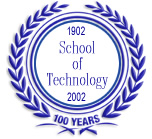|
From Voice
to Pen to Internet:
The Technology of Literature
Dr.
Bonnie Irwin
The
role of technology in the study of literature dates back to the earliest
moments of civilizations. Literature itself is a product of technology.
Without writing, we certainly would not have literature as we know it
and would also not have the cognitive tools to study it as an academic
discipline. The very nature of oral verbal art changed dramatically with
the invention of pictographs, syllabaries, and alphabets.
Oral verbal art relied more on patterns and pathways than on specific
turns of plot. Characters were recognized more from repeated tellings
of several versions of a tale rather than through the creative initiative
of one author or the intricate development of a single story. As writing
and, more importantly, reading became more prevalent, the way audiences
approached verbal art also changed. Writing contributed to the development
of new genres and new ways of reading.
Gutenberg created in the fifteenth century what would become the second
dramatic breakthrough in the production and study of literature: the printing
press. Considered by most to be the single most important invention of
the second millennium, the printing press changed the nature of almost
all academic disciplines. Printed books meant more readers with more diverse
tastes. Reading was no longer a luxury of the wealthy or monastic citizens.
With print, the study of literature as a discipline also blossomed. Texts
could be annotated and compared; translations became more common, and
study tools such as concordances were developed.
Pen and print may seem rather primitive technologies compared to the computer
revolution and the development of the Internet, but we find that their
impact was just as profound, if not more so, compared to more recent developments.
The Internet has led to the development of cybernovels, which rely on
many of the same devices, albeit in different form, as oral traditions
did: pathways and patterns. A reader may navigate a text through familiar
signposts or decide to head off in new directions. Readers may also interact
with each other, and contribute more to the meaning of the work of literature
than in the days when each was merely an isolated reader.
In many ways the history of technology and literature has come full circle.
As the production and reception of literature has become more infused
with electronic technologies, it more and more resembles the stories and
poetry of the past that originally entertained and inspired audiences.
|



